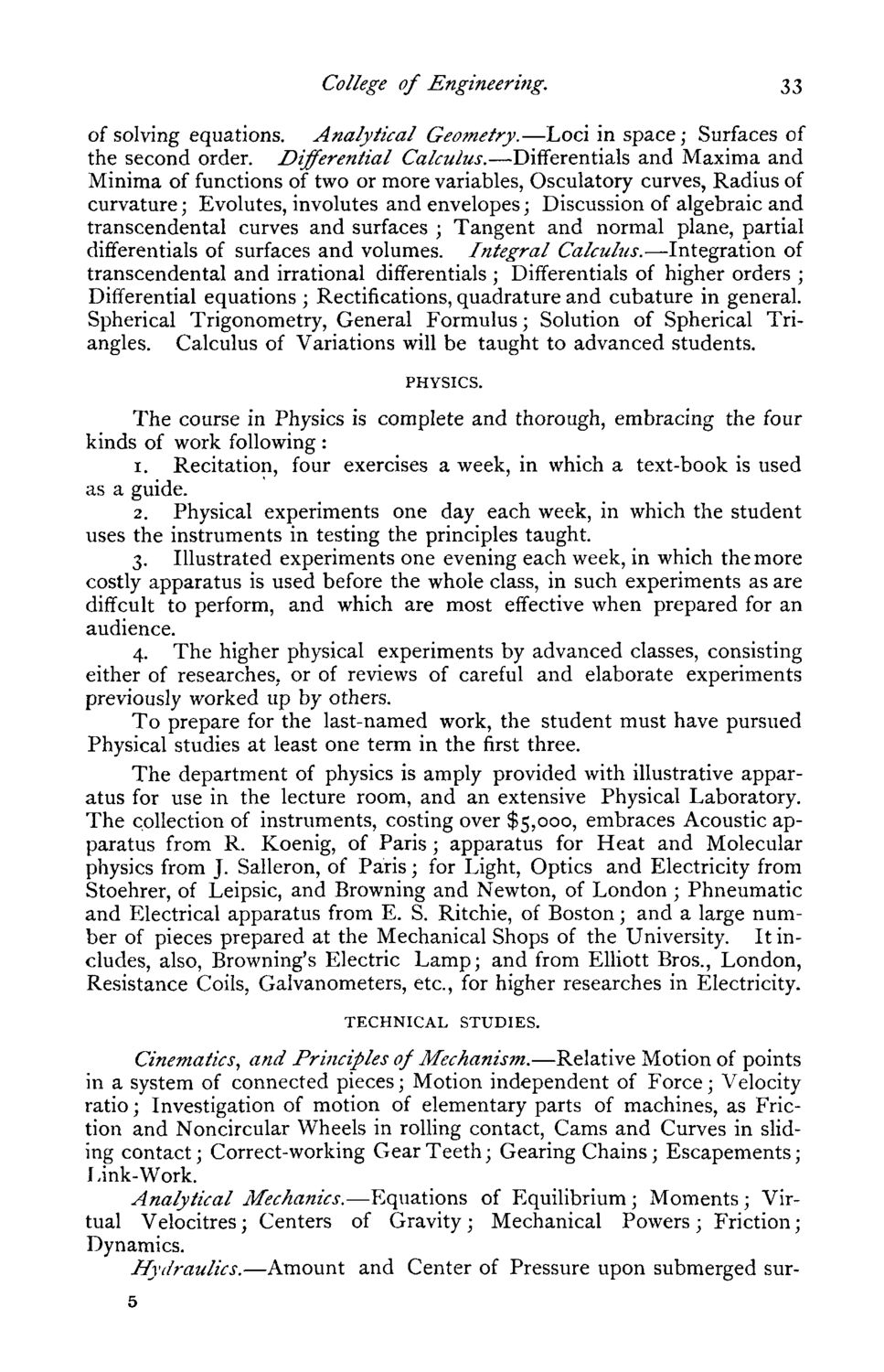| |
| |
Caption: Course Catalog - 1877-1878 Version A
This is a reduced-resolution page image for fast online browsing.

EXTRACTED TEXT FROM PAGE:
College of Engineering. 33 of solving equations. Analytical Geometry.—Loci in space; Surfaces of the second order. Differential Calculus.—Differentials and Maxima and Minima of functions of two or more variables, Osculatory curves, Radius of curvature; Evolutes, involutes and envelopes; Discussion of algebraic and transcendental curves and surfaces ; Tangent and normal plane, partial differentials of surfaces and volumes. Integral Calculus.—Integration of transcendental and irrational differentials ; Differentials of higher orders ; Differential equations ; Rectifications, quadrature and cubature in general. Spherical Trigonometry, General Formulus; Solution of Spherical Triangles. Calculus of Variations will be taught to advanced students. PHYSICS. The course in Physics is complete and thorough, embracing the four kinds of work following : 1. Recitation, four exercises a week, in which a text-book is used as a guide. 2. Physical experiments one day each week, in which the student uses the instruments in testing the principles taught. 3. Illustrated experiments one evening each week, in which the more costly apparatus is used before the whole class, in such experiments as are diffcult to perform, and which are most effective when prepared for an audience. 4. The higher physical experiments by advanced classes, consisting either of researches, or of reviews of careful and elaborate experiments previously worked up by others. To prepare for the last-named work, the student must have pursued Physical studies at least one term in the first three. The department of physics is amply provided with illustrative apparatus for use in the lecture room, and an extensive Physical Laboratory. The collection of instruments, costing over $5,000, embraces Acoustic apparatus from R. Koenig, of Paris; apparatus for Heat and Molecular physics from J. Salleron, of Paris; for Light, Optics and Electricity from Stoehrer, of Leipsic, and Browning and Newton, of London ; Phneumatic and Electrical apparatus from E. S. Ritchie, of Boston; and a large number of pieces prepared at the Mechanical Shops of the University. It includes, also, Browning's Electric Lamp; and from Elliott Bros., London, Resistance Coils, Galvanometers, etc., for higher researches in Electricity. TECHNICAL STUDIES. Cinematics, and Principles of Mechanism.—Relative Motion of points in a system of connected pieces; Motion independent of Force; Velocity ratio; Investigation of motion of elementary parts of machines, as Friction and Noncircular Wheels in rolling contact, Cams and Curves in sliding contact; Correct-working Gear Teeth; Gearing Chains; Escapements; Link-Work. Analytical Mechanics.—Equations of Equilibrium ; Moments ; Virtual Velocitres; Centers of Gravity; Mechanical Powers ; Friction; Dynamics. Hydraulics.—Amount and Center of Pressure upon submerged sur-
| |